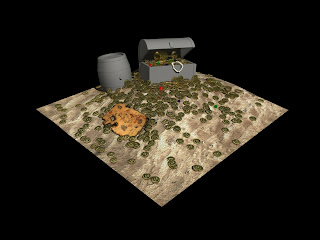 |
| Fig 1: Suspiria Movie Poster |
The plot begins with a young girl by the name of Suzy Bannion, who arrives in Munich, Germany to perfect her ballet dancing. She arrives at the academy in a thunderstorm that is quite blatantly created by the flapping of large metal sheets and the use of water pipes. However, this is appreciated by reviewer, Whilst trying to enter the Academy, Suzy encounters a young girl who seems distressed. The girl mutters something that Suzi comprehends as "secret" and "iris".
Later that night that same girl is killed by what appears to be a hand with a knife. An image that one would find reminiscent of the Turok video game.
Another aspect of the film that disturbs the audience is its soundtrack. At the worst of times, the haunting music comes to life and causes panic within the viewer.
 |
| Fig 2: Death of The First Victim |
Another incident leaves the blind pianist of the academy devoured to death by his seemingly calm dog after he 'senses the presence' of an unidentifiable being. Again, Suzy is told by a friend of her's that the pianist uttered the words "secret" and "iris" the day before he died.
Driven by fear and curiosity, Suzy decides to look further into the matter. The sets of Suspiria look like the colour-saturated counterparts of The Cabinet of Doctor Caligari (1920) or as reviewer Keith Breese states "The film slides forward in disorienting bursts, a somnambulist nightmare comparable to Caligari's." Breese,Keith.(2005).FilmCritic.com Film Review.Suspiria.
Suzy is seemingly drugged or just is strongly overcome by a very powerful sleep when her friend Sarah tries to wake her up.
 |
| Fig 3: Suzy Running Through The Corridor |
Sarah abandons her attempts to wake Suzy and begins her run down the labrynthine corridors of the academy. She is chased by the very same "Turok hand" and locks herself in a storage room which she escapes through a small window. However, she falls into a room filled with coils of barbed wire where she tragically (and rather gruesomely) meets her end.
When Suzy finds out that her friend Sarah "suddenly left the premises" she smells a rather well fed rat and begins investigating the incident herself.
She later comes to realize that the words "secret" and "iris" correspond to a secret passageway within the building that can be accessed by turning a blue iris three times. On doing so, she stumbles upon a corridor that looks like something out of The Innocents. There she discovers that the teachers of the academy are all part of a cult and are, in fact, witches.
Suzy then encounters the ghost (or what appears to be a phantasm of sorts) of an ancient witch called Helena. She tries to convince Suzy not to take any action but Suzy grabs a knife within the room and stabs Helena.The witch fades away in the style of the TARDIS from BBC's Doctor Who. This causes all the witches of the cult to yell out in agony (typical). The death of the witch causes a fire which burns down the building. The film ends with a satisfied Suzy, walking away from the academy with a smile on her face.
 |
| Fig 4: Suzy In The Room With The Irises |
Suspiria is a film filled with maggots in the ceiling and young girls falling through stained glass ceilings. It is a whole family film. As reviewer Janet Maslin puts it,"(Suspiria has) Tubular Bells"-type music by a group called The Goblins, and a great many graphic tips on how to carve one's fellows into rib roast." Maslin,Janet.(1977).Times Movie Review.Suspiria(1977): 'Suspiria,' a Specialty Movie, Drips With Gore.
Bibliography:
Gonzalez,Ed.(2001).Slant Magazine Film Review.Suspiria Available online at : http://www.slantmagazine.com/film/review/suspiria/335 (Accessed 3rd December 2011)
Breese,Keith.(2005).FilmCritic.com Film Review.Suspiria. Available online at: http://www.filmcritic.com/reviews/1977/suspiria/ (Accessed 3rd December 2011)
Maslin,Janet.(1977).Times Movie Review.Suspiria(1977): 'Suspiria,' a Specialty Movie, Drips With Gore. Available online at: http://movies.nytimes.com/movie/review?res=990CEFDB1F3BE334BC4B52DFBE66838C669EDE (Accessed 3rd December 2011)
Illustration List:
Fig 1: Argento,Dario.(1977).Suspiria http://screenrant.com/suspiria-remake-artful-goblin-score-benm-108608/ (Accessed 3rd December 2011)
Fig 2: Argento,Dario.(1977).Suspiria http://jaspersharp.com/blog/topics/suspiria/ (Accessed 3rd December 2011)
Fig 3: Argento,Dario.(1977).Suspiria http://whiggles.landofwhimsy.com/archives/2009/03/suspiria_bd_initial_impression.html (Accessed 3rd December 2011)
Fig 4:Argento,Dario.(1977).Suspiria http://whiggles.landofwhimsy.com/archives/2009/03/suspiria_bd_initial_impression.html (Accessed 3rd December 2011)

































































